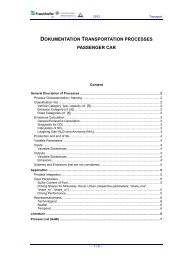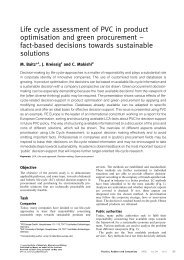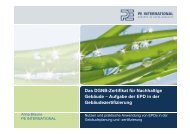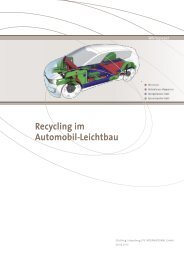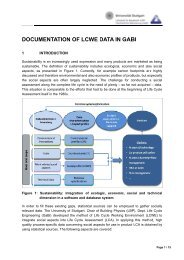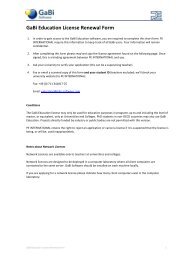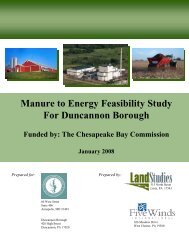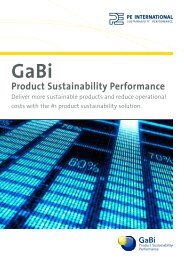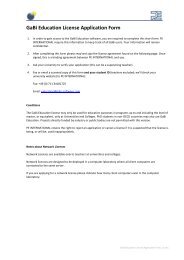GaBi Education - GaBi Software
GaBi Education - GaBi Software
GaBi Education - GaBi Software
Create successful ePaper yourself
Turn your PDF publications into a flip-book with our unique Google optimized e-Paper software.
3.2 Activating a database<br />
Procedure<br />
The database is now connected to <strong>GaBi</strong>. Now you need to activate the database.<br />
4. Click on „Activate,‟ next to the connected database, or right click on the database<br />
in the object hierarchy on the left side of the <strong>GaBi</strong> window and select „Activate.‟<br />
5. A new window will open asking for a password – just click „OK.‟<br />
3.3 <strong>GaBi</strong> theory<br />
<strong>GaBi</strong> calculates the potential environmental impacts as well as other important quantities<br />
of a product system based on plans. Within a plan, the system being studied is made up<br />
of processes and flows. In LCA terms, a plan represents the system with its boundaries,<br />
processes represent the actual processes taking place, and flows represent all the inputs<br />
and outputs related to the system. They connect plans or processes within the system or<br />
they define the input/output flows of the system. This list of input output flows is referred to<br />
as the Life Cycle Inventory (in short: LCI).<br />
The flows that enter the product system coming from the natural system (our environment,<br />
e.g. resources as hard coal) or that leave the system (e.g. CO2 emissions) are called<br />
elementary flows. The LCI is the input/output list of all elementary flows associated with<br />
the system.<br />
Perhaps the most important information of <strong>GaBi</strong> is the flow information. Flows are<br />
characterized by mass, energy and costs with their respective values. For example, <strong>GaBi</strong><br />
contains flow information for different raw materials, plastics, metals, emissions to air and<br />
water and many, many more.<br />
It is important to understand that flows contain information that tells <strong>GaBi</strong> to what extent<br />
one unit of this flow contributes to different environmental impact categories: these are<br />
called classification and characterisation factors. Let´s look at an example. In the object<br />
hierarchy, click on the plus next to flows and expand the flow group.<br />
You will notice that flows are grouped in folders according to whether or not they are<br />
resources, emissions or other types of flows.<br />
6. Click to expand the ´Resources´ flow category and again to expand „Energy<br />
resources‟ and „Non renewable energy resources.‟<br />
7. Now click on the „Natural gas‟ folder.<br />
29



